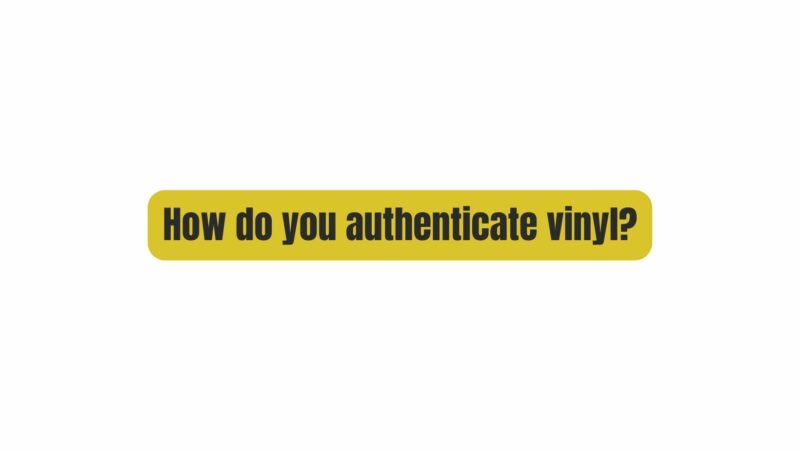Vinyl records hold a special place in the hearts of music enthusiasts and collectors, offering a tangible connection to the artists and eras they represent. However, as the demand for vinyl continues to rise, so does the risk of encountering counterfeit or unauthorized records. Authenticating vinyl records is a critical skill for collectors to distinguish genuine pieces from replicas or unauthorized releases. In this comprehensive guide, we will delve into the techniques, factors, and resources that can aid you in authenticating vinyl records with confidence.
Understanding the Importance of Authentication
Authenticating a vinyl record is not merely a matter of verifying its origin; it is a journey to uncover its history, rarity, and true value. Here’s why authentication is essential:
- Value Determination: Authentication helps establish the value of a vinyl record, as original pressings and limited editions often command higher prices in the collector’s market.
- Historical Significance: Original pressings carry historical significance, capturing the essence of the era when the music was first released.
- Collector’s Satisfaction: Authentic vinyl records provide collectors with a sense of satisfaction and pride, knowing they own a genuine piece of music history.
Key Factors for Authenticating Vinyl Records
To authenticate a vinyl record, consider these key factors:
- Label and Catalog Number: The label and catalog number on the vinyl record should match the official release. Investigate discography databases and reference books for accurate information.
- Matrix Runout: The matrix runout etched into the vinyl’s runout groove area often contains information about the record’s origin, including the pressing plant, mastering engineer, and catalog number.
- Cover and Packaging: Examine the album cover, artwork, and packaging for specific details, such as design variations, printing quality, and the presence of original shrink-wrap, stickers, or inserts.
- Vinyl Weight and Color: Original pressings may feature heavier vinyl and unique color variations, such as marbled or translucent vinyl. Compare the vinyl’s weight and appearance to known originals.
- Copyright and Publishing Information: Check the copyright and publishing details on the record label, cover, and inner sleeves. Verify that they match the official release information.
- Country of Origin: Different countries or regions may produce various pressings of the same album. Knowing the country of origin for the release can provide valuable information for authentication.
- Vinyl Condition: Inspect the condition of the vinyl itself. Original pressings are often well-preserved and may show minimal signs of wear or use. Beware of records that appear excessively worn or damaged.
- Sound Quality: Listen to the record to evaluate its sound quality. Original pressings are often lauded for their superior audio quality compared to reissues or counterfeits.
- Historical Research: Extensive research on the artist, album, and record label can offer historical context and insights into the vinyl record’s authenticity. Explore collector forums, discography databases, and reference books specific to the genre or artist for information.
Authentication Resources
To assist in the authentication process, utilize the following resources:
- Collector Forums: Online collector forums provide a platform to seek advice from experienced collectors and discuss authentication challenges.
- Discography Databases: Consult online discography databases, which compile comprehensive information about artists, albums, and their various pressings.
- Reference Books: Explore reference books specific to vinyl collecting and discographies, offering in-depth insights and documentation of releases.
- Vinyl Grading Guides: Vinyl grading guides help assess the condition of vinyl records accurately, including factors like surface noise, scratches, and warp.
- Record Collectors’ Guides: Specialized guides written by experts in vinyl collecting can offer valuable tips and advice for authentication.
- Professional Appraisers: In cases of high-value or rare records, consider seeking the expertise of professional appraisers or authenticators.
Conclusion
Authenticating vinyl records is a valuable skill that enhances the experience of vinyl collecting. It allows collectors and enthusiasts to appreciate the history, rarity, and value of their vinyl treasures fully. Remember that authentication can be nuanced, and some factors may not guarantee authenticity on their own. Utilize a combination of techniques, reference materials, and resources to authenticate vinyl records effectively. The journey to authenticity is not only about ensuring the record’s genuineness but also about connecting with the rich tapestry of music history encapsulated within the grooves of each vinyl disc. With dedication and the knowledge gained from this guide, you can confidently identify and cherish authentic vinyl records for years to come.


